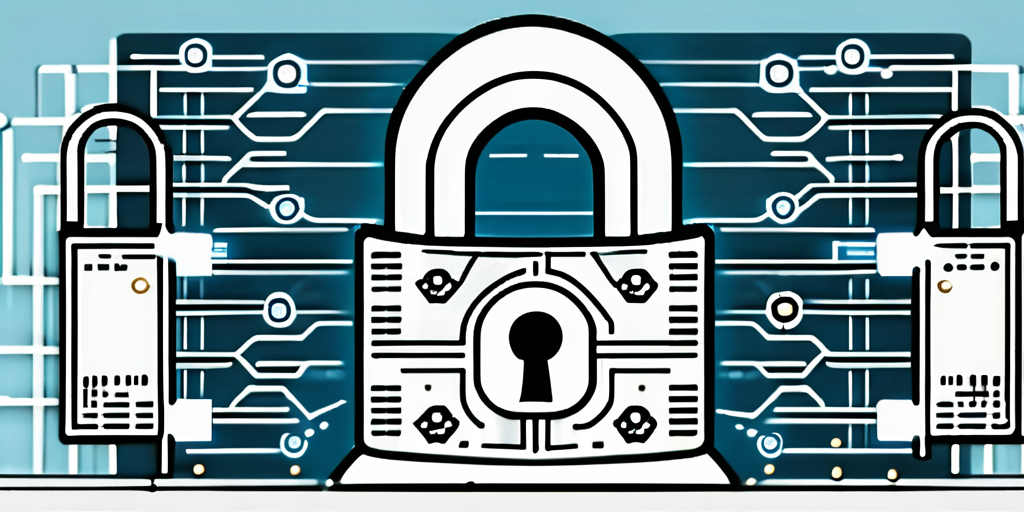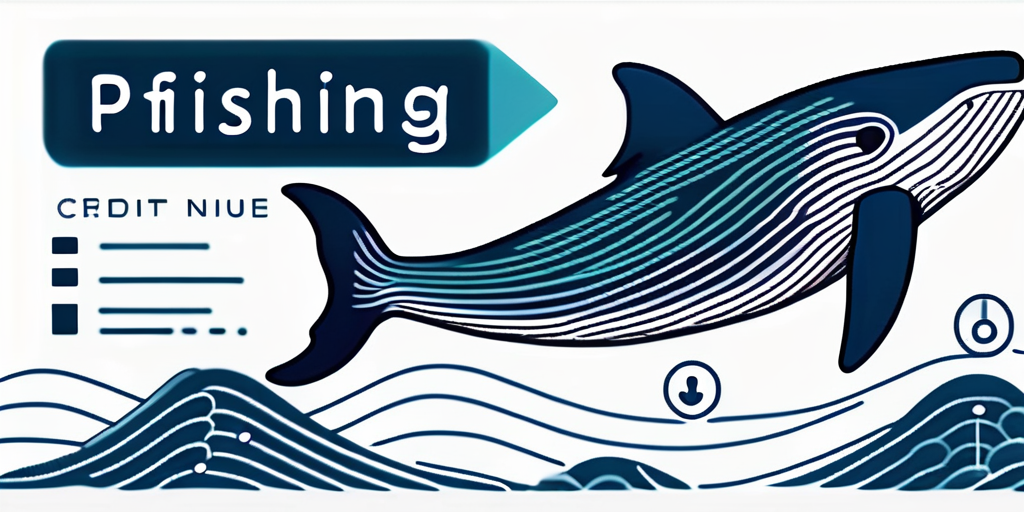In today’s digital world, cybersecurity threats are becoming increasingly sophisticated and prevalent. Two common forms of cyber attacks that individuals and organizations need to be aware of are phishing and whaling. While both involve deceptive tactics to obtain sensitive information, their target audience, attack complexity, and potential impact differ. Understanding the differences between phishing and whaling can help individuals and organizations better protect themselves from these malicious activities.
Defining Cybersecurity Threats
Before delving into the specifics of phishing and whaling, it’s important to have a clear understanding of what these cybersecurity threats entail.

Cybersecurity threats have become increasingly prevalent in today’s digital landscape. With the rapid advancement of technology, individuals and organizations are constantly at risk of falling victim to various malicious activities. Two common forms of cyber attacks that have gained significant attention are phishing and whaling.
What is Phishing?
Phishing is a form of cyber attack where attackers impersonate legitimate organizations, typically through email, in order to trick individuals into revealing confidential information such as passwords, credit card numbers, or social security numbers. These fraudulent emails often appear convincing, using professional-looking logos, language, and links that direct victims to fake websites designed to collect their personal data.
Phishing attacks can have severe consequences for individuals and organizations. Once attackers gain access to sensitive information, they can exploit it for financial gain, identity theft, or even launch further targeted attacks. It is crucial for individuals to be vigilant and cautious when handling emails, especially those requesting personal or confidential information.
There are various types of phishing attacks, including spear phishing, clone phishing, and whaling. Each type employs different tactics to deceive victims and extract sensitive data. It is essential for individuals and organizations to stay informed about the latest phishing techniques and implement robust security measures to mitigate the risks.
What is Whaling?
Whaling, on the other hand, is a more targeted and sophisticated form of phishing that specifically focuses on high-ranking executives or individuals with significant authority within an organization. Whaling attacks often involve personalized and tailored emails that exploit the victim’s position to gain access to sensitive information or execute fraudulent transactions.
Whaling attacks can be highly detrimental to organizations as they target individuals who hold key positions and have access to critical data and resources. The attackers meticulously research their targets, gathering information from various sources to craft convincing emails that appear legitimate. These emails often exploit the recipient’s trust and authority, making it more likely for them to comply with the attacker’s requests.
Whaling attacks can lead to significant financial losses, reputational damage, and compromised business operations. Organizations need to implement robust security measures, such as multi-factor authentication, employee training programs, and regular security audits, to protect against whaling attacks.
Additionally, it is crucial for individuals to be cautious and skeptical when receiving emails, even if they appear to be from trusted sources. Verifying the authenticity of requests, double-checking email addresses, and reporting suspicious activities can help mitigate the risks associated with whaling attacks.
As the digital landscape continues to evolve, cyber attackers are constantly finding new ways to exploit vulnerabilities and deceive individuals and organizations. Understanding the nature of cybersecurity threats, such as phishing and whaling, is essential in order to effectively protect against them. By staying informed, implementing robust security measures, and fostering a culture of cybersecurity awareness, individuals and organizations can mitigate the risks and safeguard their digital assets.
Key Differences Between Phishing and Whaling
While both phishing and whaling aim to deceive individuals, there are several key differences that distinguish these two forms of cyber attacks.
Phishing attacks commonly target a wider audience, casting a wide net in the hopes of tricking as many individuals as possible. These attacks often exploit commonly used services or platforms, like online banking or popular social media platforms, in order to maximize their reach.
However, it is important to note that phishing attacks are not limited to just email. Attackers may also use other communication channels, such as text messages or phone calls, to trick individuals into revealing their personal information. These attackers often employ various techniques to make their messages appear legitimate, such as using official logos, mimicking the language of trusted organizations, or creating a sense of urgency.
On the other hand, whaling attacks specifically target high-profile individuals within an organization, such as CEOs, CFOs, or other executives who possess valuable information or authority. These individuals are often seen as lucrative targets due to their access to sensitive data or their ability to authorize financial transactions.
Whaling attacks require a higher level of sophistication and personalization. Attackers carefully research their targets to create convincing and tailored emails that exploit their authority and knowledge of the organization. They may use information gathered from public sources, such as social media profiles or professional networking sites, to craft messages that appear legitimate and trustworthy.
The potential impact of a whaling attack is often far greater than that of a typical phishing attack. By targeting high-ranking individuals, whaling attacks have the potential to access highly sensitive company data, make unauthorized financial transactions, or even cause reputational damage to the organization.
In some cases, whaling attacks have resulted in significant financial losses for organizations. Attackers may use the compromised email accounts of executives to send fraudulent payment requests to employees or business partners, leading to substantial monetary losses.
Furthermore, the reputational damage caused by a successful whaling attack can have long-lasting effects on an organization. The loss of customer trust and confidence can result in decreased business opportunities and potential legal consequences.
Phishing attacks, while still significant, often have a more direct impact on individuals. These attacks can lead to financial loss, identity theft, or unauthorized access to personal accounts. Individuals who fall victim to phishing attacks may find themselves facing fraudulent charges on their credit cards, unauthorized access to their online accounts, or even the theft of their personal information.
It is important for individuals and organizations to remain vigilant and take proactive measures to protect themselves against both phishing and whaling attacks. This includes regularly updating security software, educating employees about the risks and warning signs of these attacks, and implementing multi-factor authentication to add an extra layer of protection.
Common Techniques Used in Phishing and Whaling
Phishing and whaling attacks employ various techniques to deceive their victims. Understanding these techniques can help individuals identify and protect themselves against such attacks.

Phishing and whaling attacks are becoming increasingly sophisticated, making it essential for individuals to stay informed about the latest techniques used by attackers. By being aware of these tactics, individuals can better protect themselves and their sensitive information.
Email Spoofing
Email spoofing is a technique commonly used in both phishing and whaling attacks. Attackers manipulate the email headers or sender information to make it appear as if the email is coming from a trusted source. By impersonating legitimate organizations or individuals, attackers can increase the likelihood of their victims falling prey to their deception.
Attackers often use email spoofing to mimic well-known companies, financial institutions, or even government agencies. They may send emails that appear to be from these trusted sources, asking recipients to provide personal information or click on malicious links. These emails are designed to create a sense of urgency or importance, making individuals more likely to act without questioning the authenticity of the email.
It is important to note that email spoofing can be challenging to detect, as attackers can make the email appear legitimate by using logos, formatting, and language similar to the genuine organization. However, there are some signs that individuals can look out for, such as misspelled email addresses, unusual requests, or generic greetings.
Website Cloning
Website cloning involves creating fake websites that closely resemble legitimate ones. Attackers use this technique to trick individuals into entering their sensitive information, such as usernames and passwords, on these malicious sites. This technique is often employed in phishing attacks to capture personal data or login credentials.
Attackers clone websites by replicating the design, layout, and content of legitimate websites. They may use similar domain names or URLs to make the fake website appear genuine. Once individuals enter their information on these cloned websites, attackers can collect their data and use it for malicious purposes, such as identity theft or unauthorized access to accounts.
To avoid falling victim to website cloning attacks, individuals should always double-check the URL of the website they are visiting. They can do this by hovering over links before clicking on them or manually entering the website address in their browser. Additionally, individuals should be cautious when providing personal information on websites and ensure that the website is secure by looking for HTTPS in the URL.
Social Engineering
Social engineering plays a crucial role in both phishing and whaling attacks. Attackers manipulate human psychology to deceive individuals into taking actions that they wouldn’t otherwise do. This can range from creating a sense of urgency or fear to exploiting trust and authority to extract sensitive information.
Attackers often use social engineering techniques to exploit human emotions and vulnerabilities. They may send emails or messages that evoke fear, such as claiming that the recipient’s account has been compromised or that they will face consequences if they do not act immediately. By creating a sense of urgency, attackers hope to bypass the recipient’s critical thinking and prompt them to take immediate action without considering the potential risks.
Another common social engineering tactic is to impersonate trusted individuals or authorities. Attackers may pose as colleagues, supervisors, or even high-ranking executives to gain the trust of their victims. By leveraging this trust, attackers can convince individuals to disclose sensitive information, transfer funds, or perform other actions that benefit the attacker.
It is crucial for individuals to be skeptical of unsolicited emails or messages, especially those that request personal information or prompt immediate action. Verifying the authenticity of the sender through other means, such as contacting the organization directly or using official contact information, can help individuals avoid falling victim to social engineering attacks.
How to Identify Phishing and Whaling Attacks
Being able to identify phishing and whaling attacks is essential for safeguarding personal and organizational security. In today’s digital age, cybercriminals are constantly finding new ways to deceive individuals and organizations. By understanding the signs of these attacks, you can protect yourself and your organization from falling victim to these malicious schemes.
Signs of a Phishing Attack
Phishing attacks are one of the most common forms of cybercrime. These attacks typically involve sending fraudulent emails that appear to be from a reputable source, such as a bank or an online service provider. Here are some signs to watch out for:
- Generic greetings or impersonal salutations: Phishing emails often start with generic greetings like “Dear Customer” or “Dear User.” Legitimate organizations usually address their customers by their names.
- Poor grammar or spelling mistakes in the email: Phishing emails often contain grammatical errors, typos, or awkward sentence structures. This is a red flag as reputable organizations typically have professional communication standards.
- Suspicious or unfamiliar email sender addresses: Phishing emails may come from email addresses that look similar to legitimate ones but have slight variations or unfamiliar domains. Always double-check the sender’s email address before taking any action.
- Requests for personal information or login credentials: Phishing emails often ask recipients to provide personal information, such as passwords, social security numbers, or credit card details. Legitimate organizations rarely request such sensitive information via email.
- Urgency or threats of negative consequences: Phishing emails often create a sense of urgency, claiming that immediate action is required to avoid negative consequences, such as account suspension or loss of access. This is a tactic used to pressure recipients into taking hasty actions without thinking.
It is important to remain vigilant and exercise caution when dealing with emails that exhibit these signs. If you suspect an email to be a phishing attempt, it is best to contact the organization directly through their official channels to verify its authenticity.
Signs of a Whaling Attack
Whaling attacks, also known as CEO fraud or business email compromise (BEC), are a more sophisticated form of phishing that specifically targets high-ranking individuals within an organization. These attacks aim to deceive executives or employees with access to sensitive information or financial resources. Here are some signs to watch out for:
- Personalized greetings addressing specific individuals by name and title: Whaling emails often begin with personalized greetings that address recipients by their names and job titles. Cybercriminals use this tactic to create a sense of familiarity and legitimacy.
- Emails that focus on sensitive and confidential information: Whaling emails typically revolve around sensitive topics, such as upcoming mergers, financial reports, or confidential projects. The attackers aim to exploit the recipient’s position of authority or access to valuable information.
- Requests for wire transfers or financial transactions without proper verification: Whaling attacks often involve fraudulent requests for wire transfers or financial transactions. These requests may appear urgent and require immediate action without proper verification processes in place.
- Emails that exploit the authority of high-ranking individuals within an organization: Whaling emails may impersonate CEOs, CFOs, or other high-ranking executives within an organization. The attackers use their authority to manipulate recipients into complying with their requests.
Whaling attacks can have severe consequences for organizations, leading to financial loss, reputational damage, and compromised data. To mitigate the risk of falling victim to such attacks, organizations should implement robust security measures, including multi-factor authentication, employee training programs, and strict verification processes for financial transactions.
By familiarizing yourself with the signs of phishing and whaling attacks, you can enhance your ability to identify and report suspicious emails. Remember, staying informed and maintaining a cautious approach to online communication is crucial in the fight against cybercrime.
Prevention and Protection Strategies
Protecting against phishing and whaling attacks requires a combination of individual awareness and corporate cybersecurity measures.

Best Practices for Individuals
Avoid clicking on suspicious links or downloading attachments from unknown or untrusted sources.- Verify the legitimacy of emails or requests by contacting the organization directly using verified contact information.- Regularly update passwords and ensure they are strong and unique for each online account.- Enable two-factor authentication whenever possible.- Stay updated on the latest security threats and educate yourself about common phishing and whaling techniques.
Corporate Strategies for Cybersecurity
Implement robust email filtering systems to detect and prevent phishing and whaling attacks.- Conduct regular security awareness training for employees, emphasizing the importance of identifying and reporting suspicious emails.- Implement multi-factor authentication and strong access controls for high-profile individuals.- Continuously monitor and update security protocols to stay ahead of evolving threats.- Regularly perform security audits and penetration testing to identify vulnerabilities.
Individuals and organizations can better protect themselves against these cyber threats by understanding the differences between phishing and whaling. With increased awareness and robust cybersecurity measures, individuals and organizations can minimize the risk of falling victim to these deceptive attacks.
Don’t let your organization become the next victim of sophisticated phishing or whaling attacks. Blue Goat Cyber, a Veteran-Owned business, is dedicated to fortifying your cybersecurity defenses. We’re committed to protecting your sensitive data, specializing in medical device cybersecurity, HIPAA and FDA compliance, and comprehensive penetration testing, including SOC 2 and PCI. Contact us today for cybersecurity help tailored to your unique needs and stay one step ahead of cyber threats.


